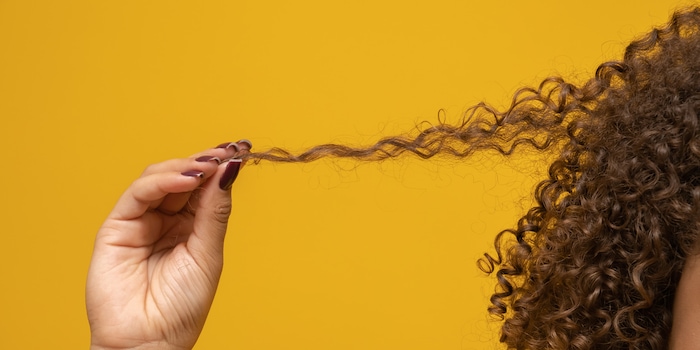
Curls cool the head
Carrying around a thick mop of curls on your head in the heat? What seems annoying at first glance has proven to be doubly practical in the lab.
The sun was beating down on our heads and drinking water was often in short supply: even our ancestors in Africa had to contend with the heat. The fact that many people still have curly hair today could have something to do with this: The curls once meant a survival advantage under the African sun. This is the conclusion reached by a team led by anthropologist Tina Lasisi from the University of Southern California after a series of laboratory experiments.
As the group describes in the "Proceedings of the National Academy of Sciences", they used a model mannequin to investigate the influence of human hair on the thermal regulation of the head. To do this, the mannequin was programmed so that its head surface remained at a constant temperature of 35 degrees Celsius, corresponding to the human scalp, by applying electricity. Using the amount of electricity required for this, the researchers were able to calculate how much the artificial skin heated up or cooled down under different laboratory conditions.
The doll's head was irradiated with lamps, similar to the sun's rays. It was exposed to three different wind strengths to simulate the draughts that occur when standing, walking or running. In addition, the artificial scalp was sometimes dry, sometimes moist, similar to a sweating person. Last but not least, the hair on the head was also varied: Either the skull remained bald or it was covered by a wig with sometimes straight, sometimes slightly curly or strongly curly human hair. All tests took place at 30 degrees Celsius and 60 degrees humidity - typical of the conditions under which our ancestors lived in equatorial Africa, as the researchers explain.
The result: a moist scalp always gave off heat, especially when walking and without hair. Although the three wigs could not completely prevent this, they did significantly reduce heat loss. With a dry head, the opposite was true: overheating was more of a threat, especially with a bald head. All three wigs prevented this, but to varying degrees: the best protection from the sun was provided by thick curls - under their shield, the artificial scalp either barely warmed up or even gave off heat when there was a strong draught.
Tight curls form a thick shield
The idea that scalp hair not only kept early humans warm but also protected them from the sun is nothing new: an earlier study had already established that a bald head sweats at least twice as much as a hairy head. However, based on their experiments, the researchers believe that thick curls in particular helped to survive longer periods without water - especially in the phase around two million years ago when the brain began to grow.
In the present study, all the wigs had dark hair. With short hair, a light colour provides better protection from the sun, but not with longer hair, explain Lasisi and her team. In this case, it is more important that the hair forms as thick a shield as possible. It is still unclear in which phase of human evolution the hair began to curl. The group believes it is conceivable that this development began in Australopithecus. Whether the curls could also have been an advantage in colder climes remains to be investigated.
Spectrum of Science
We are partners of Spektrum der Wissenschaft and want to make well-founded information more accessible to you. Follow Spektrum der Wissenschaft if you like the articles.
[[small:]]
Cover image: Shutterstock / Brastock / Dark curls not only look beautiful, but also protect against the sun (symbolic image).
Experts from science and research report on the latest findings in their fields – competent, authentic and comprehensible.